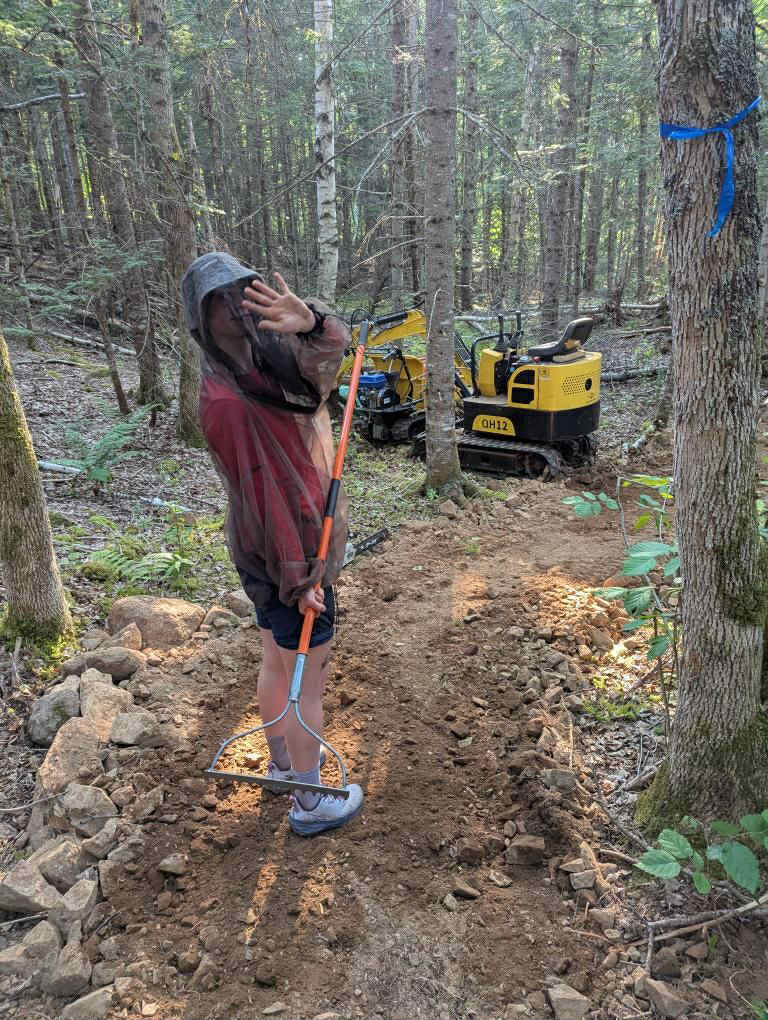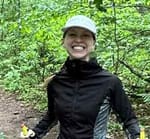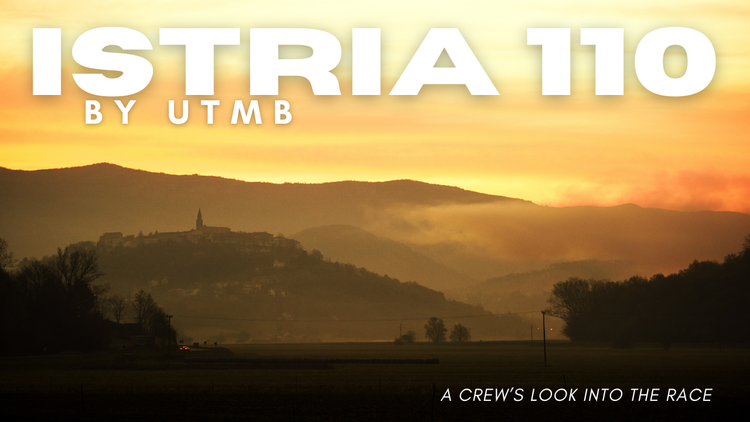Trail Running 🤝 Trail Building
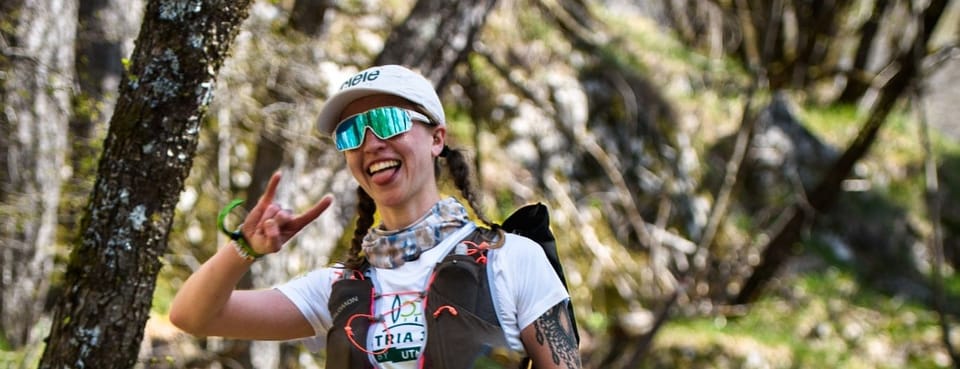
During the global pandemic, I stumbled into trail running while unraveling myself from the workaholic life I no longer aspired to live. I really didn’t know what I was looking for when I asked a friend to bring me along on a trail run, only that I needed to be outside and away from a computer screen to think, breathe, and feel something other than burnout. At first, runs felt hard, slow, and clumsy, but they offered something I didn’t realize I was missing at that time: presence.
Joining Saint John Trail Running was both a means of escapism and a sense of community; two conflicting concepts that I didn’t realize I so desperately needed. What started as a coping mechanism became a way of life. I no longer ran just to clear my head, I ran because I was falling in love with the scenery, the friendships I was forging, and most importantly, the version of myself I was becoming.
My days began to revolve around my next run, and weekends turned into mini-expeditions with friends to various trailheads. I found myself wondering - and still do - how I ever filled my time before trail running found me.
The more time I spent on the trails, the more I wondered what I was capable of. I’d never seen myself as “athletic,” so the idea of racing felt intimidating—too serious, too competitive, but curiosity and comradery has a way of nudging me out of my comfort zone. In 2021, I signed up with a group of friends for the first edition of the Bootstrap Boogie, a 17km race through the Irving Nature Park.
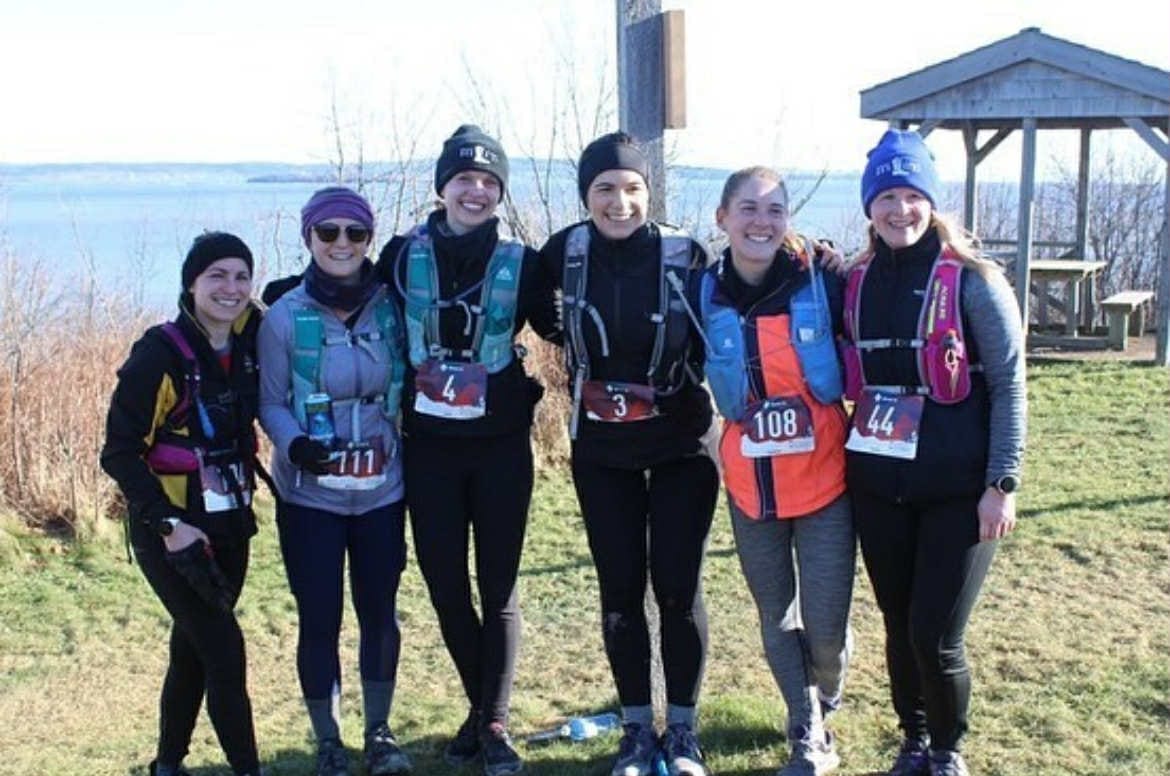
That day, my mentality changed and I realized racing isn’t always about being the fastest. Sometimes it’s about showing up, pushing your own limits, and working toward something bigger than the run itself.
Challenging myself became almost addictive, in the best way. I started training with intention, learning about nutrition, pacing, and mental resilience – lessons that came with A LOT of trial and error. In 2022, I ran the 50km Fundy Circuit loop with friends. Almost a year later, I stood at the start line of my first official ultra race, the 55km at Gaspésia 100, surrounded by seasoned runners, wondering what the heck I was even doing there.
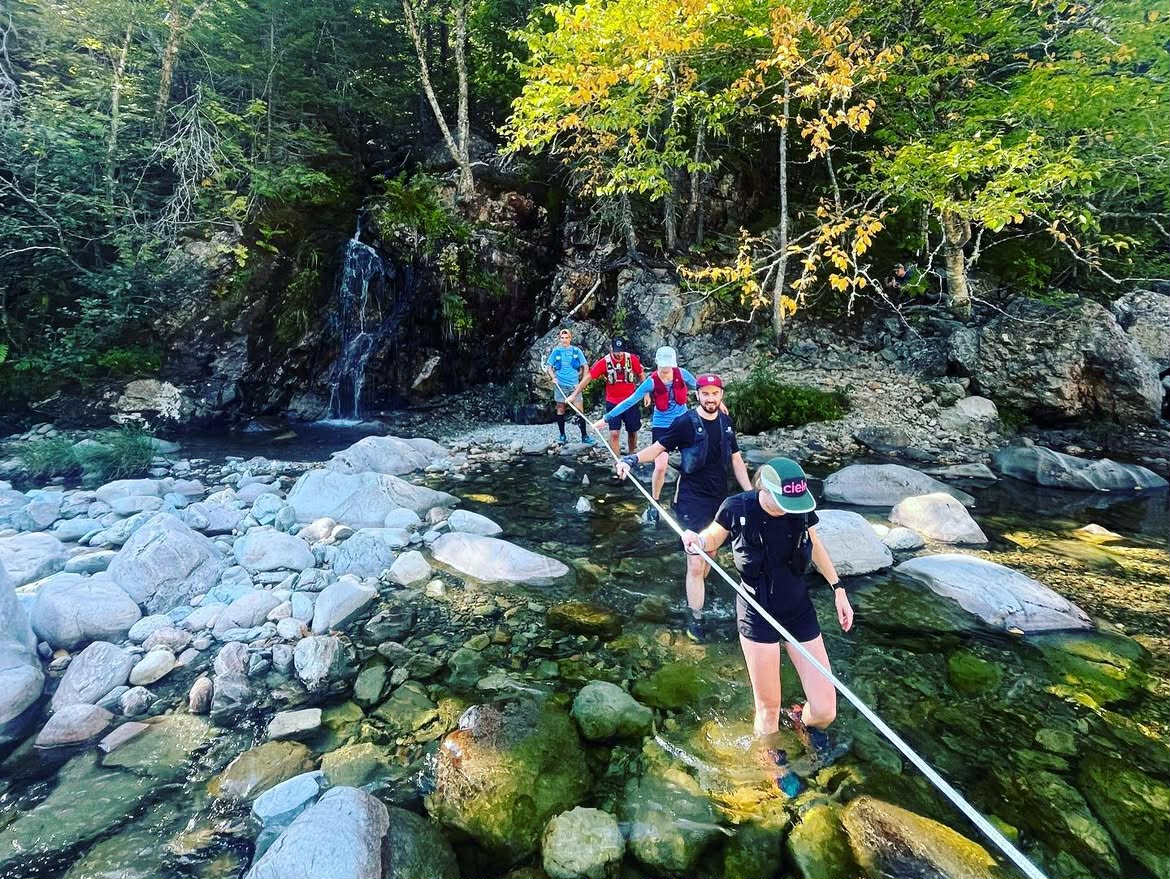
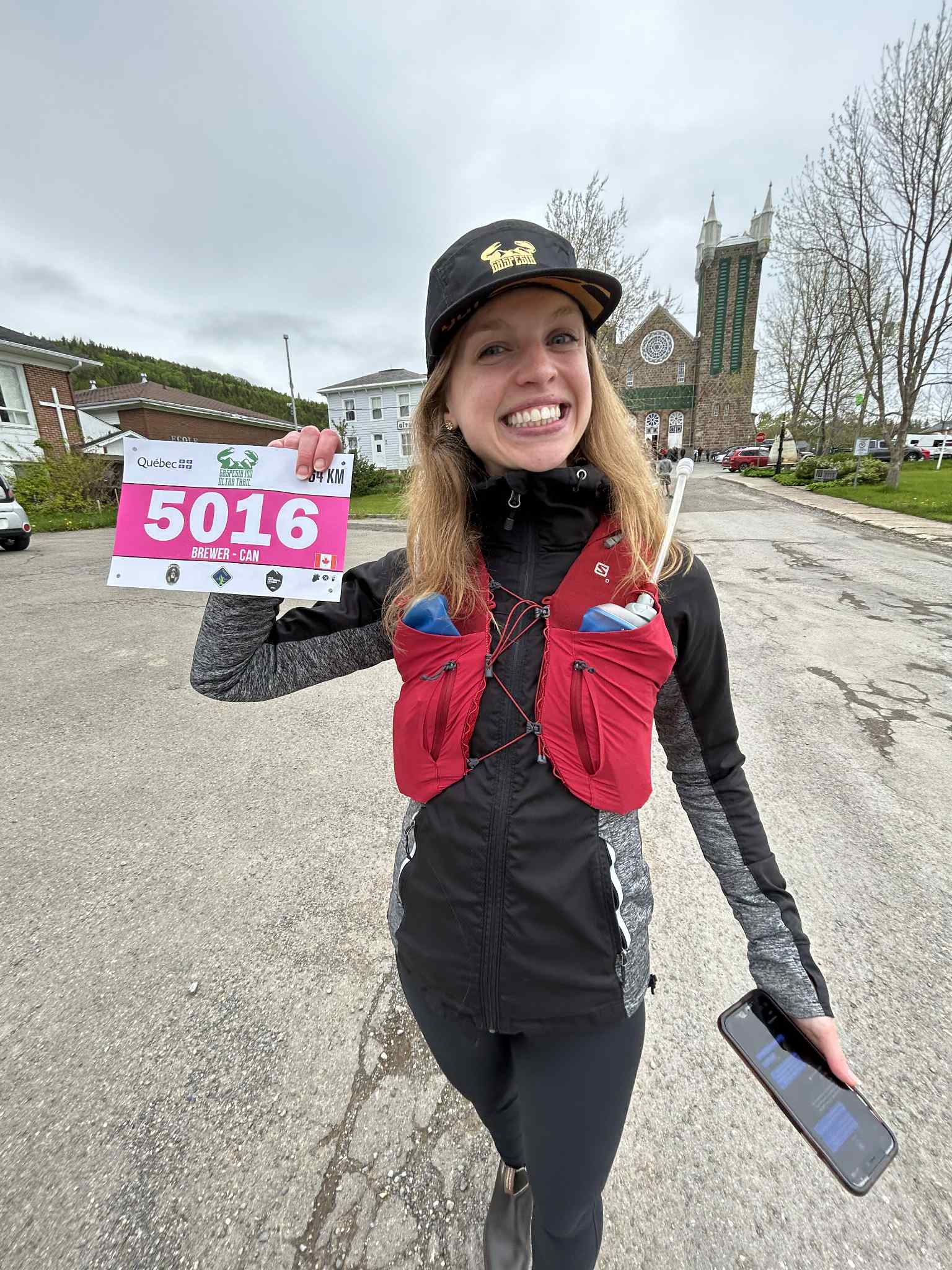
Since then, I’ve completed 10 ultra distances (steadily increasing in length), casually and competitively, with my most recent being the 110km in Istria. The nervousness still hasn’t fully subsided but has become more of a hum in the background, dulled by hope, experience and self-trust.
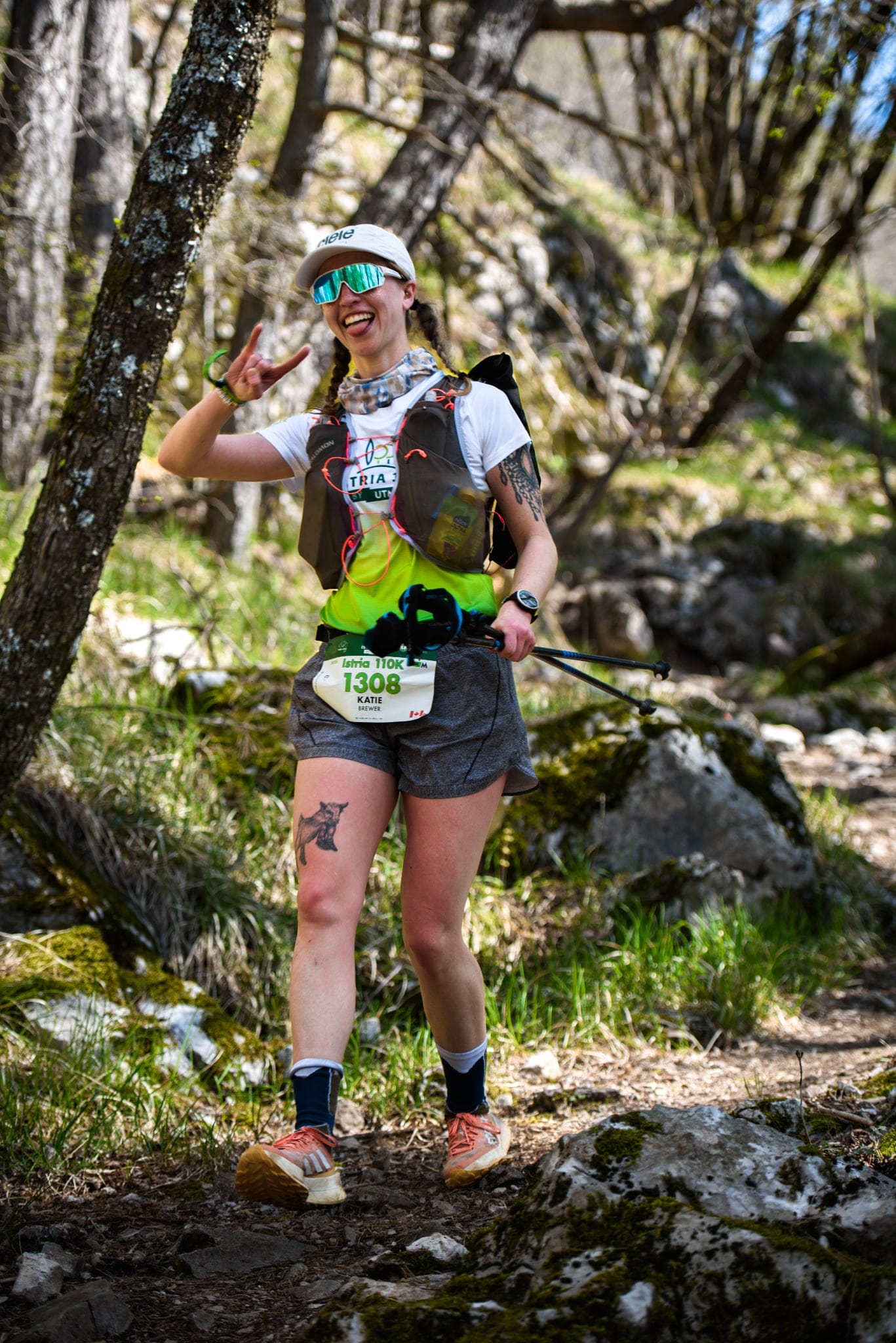
My leap from casual runner to ultrarunner wasn’t about speed or status; it was about falling in love with the process of finding out what I can (and can’t) do (yet).
The more time I spent on the trails, the more I noticed not only the thought that goes into planning trails, but erosions after heavy rain, overgrown singletrack, the signs of wear from constant use. I realized these trails didn’t just create themselves; they were built, maintained, and cared for, often by volunteers.
The trails I ran on had shaped me in ways I’ll forever be grateful for, and really, it was about time to return the favor.
My first trail maintenance experience wasn’t glamorous, it mostly involved picking up litter, clearing fallen branches, and removing loose rocks. For the first time, I wasn’t just using the trail, I was caring for it, and it didn’t take long to realize that even the smallest efforts mattered. It’s simple, almost meditative work, but it gave me a new perspective that I subconsciously continue to put into practice regularly while using trails.
Eventually, just a couple days after completing the 80km at QMT in 2024, I got to experience trail building right here at Back River Bike Park. At first, I felt like an imposter, with no experience planning trails and operating tools and machinery I had no business handling. With a sense of humility and a willingness to be uncomfortable, I leaned into it, got my hands dirty, and tried to learn as much as I could.
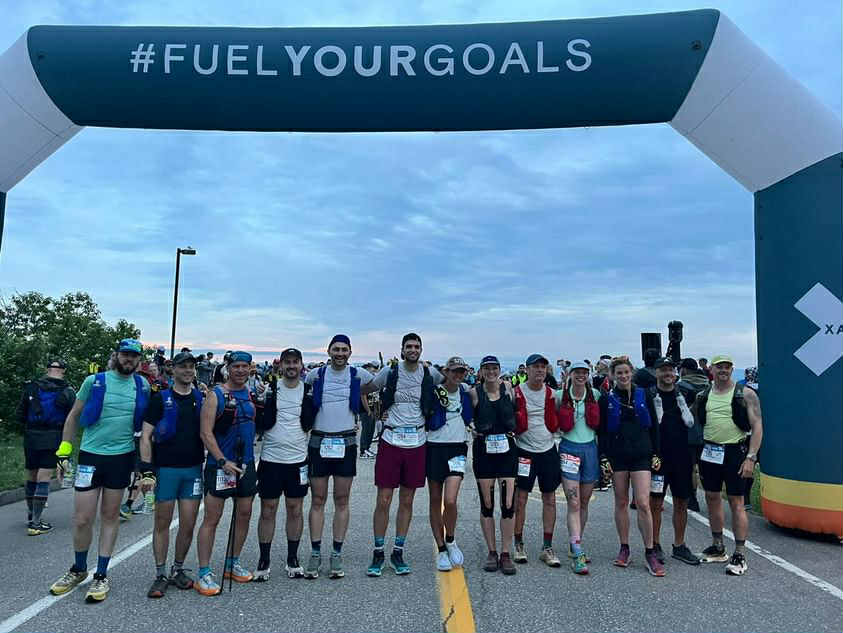
It didn’t take long to realize that trail building—like trail running—demands patience, presence, and respect for the terrain. I started to understand how the trail takes shape, not just through tools and machines, but through conversations, hard work, thoughtful planning, and a multitude of small decisions. There’s something deeply satisfying about being a small part of shaping land in a way that others can experience.
Running changed my life, and joining the biking community added a whole new layer to my love for the outdoors, drawing me even more frequently into the trails I already cherished. Now, I spend more time than ever moving through the woods; sometimes on foot, sometimes on two wheels. Getting involved in the “behind-the-scenes” work of building trails has deepened my appreciation for both the trails themselves and the communities behind them. These trails aren’t just places we move through—they’re something we care for and build together.
